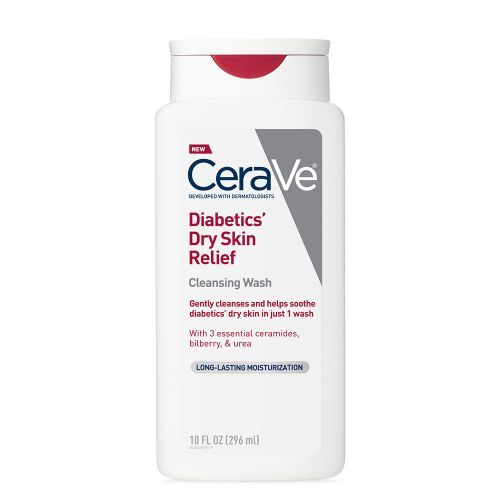One thing that a lot of people like about intermittent fasting is that it provides you with a lot of choices. As mentioned, there are a few different ways that you can do an intermittent fast based on your schedule and lifestyle. Some people find that they have a few busy days during the week and so will fast on those days. Others like the idea of limiting their eating window and doing a small fast each day.
The fasting method that you choose is up to you. All of them can be effective and will provide you with some of the benefits that you are looking for. Let’s take a look at some of the fasting options that you can go with, so you can choose the right one for you.
* The 16/8 Method
This is one of the most common methods that you can use in intermittent fasting. It requires that you fast for about 14 to 16 hours each day and eat during the remainder of the hours. During this eating window, you are still able to fit in two to three meals without a problem. This is more likely to fit into the eating schedule that you are used to, but it still limits you so that you do not eat all day long.
This method is easier than you think. It is as easy as not eating any snacks after you are done with dinner and then skipping breakfast, or at least having a late breakfast. So, if you finish your last meal at 8 at night and then do not eat anything until noon the next day, you are already fasting for 16 hours. You just have to be careful about the late-night snacks. If you eat them, you will need to avoid breakfast in the morning.
Some people have issues with this because they feel hungry in the morning and feel they need to eat breakfast. You can simply move breakfast to a little later in the day. For example, if you choose to eat breakfast at 10 in the morning instead of 8 and then stop eating by 6 at night, you would still be within the 16-hour window.
If you’re a woman, this is the option that you should probably go with. Women typically do the best with these shorter fasts and may want to consider going with 14 to 15 hours between eating because this is more effective for them.
During the fast, you are allowed to drink water, tea, coffee, and other beverages that are non-caloric to help reduce the hunger pains that occur. In addition, you should try to stick with healthier foods during your eating window. It is not a good idea to eat a lot of unhealthy food during this time. Some people like to go on a low-carb diet when they are on intermittent fast because it helps with hunger and allows for better results.
* The 5:2 diet
Another option that you can go with is the 5:2 diet. This one asks you to eat normally for five days during the week and restrict yourself to no more than 600 calories on each of the other two days. This is sometimes called “the Fast diet” as well.
On these fasting days, it is recommended that women stay around 500 calories and men at 600 calories. For instance, you will eat normally each day of the week, and on Monday and Thursdays, you will only eat two small meals with a total of 500-600 calories. You can choose any days of the week as your fasting days, as long as you don’t have them back to back.
Pick your two busiest days of the week and make those your fasting days. There are not many studies out there about the 5:2 diet, but since it is an intermittent fast, it will provide most of the benefits that you are looking for. You will be able to get things done without having to worry about making meals the whole day.
* Eat-Stop-Eat diet
The Eat-Stop-Eat diet requires you to refrain from eating for 24 hours once or twice a week. This method was first popularized by Brad Pilon and has been a popular way to do the intermittent fast for some time. It’s possible to follow this fast while still having one meal a day. Most people will have supper one day and then not eat anything until supper the next day. This allows you to never go a whole day without eating but still fall in the 24-hour abstinence period.
You can change this however you like. If it is easier for you to go from breakfast to breakfast or lunch to lunch, then you can choose one of these options. During your fast, you are allowed to have coffee, water, and other non-caloric beverages to keep yourself hydrated, but you’re not allowed to have any food at all.
Remember that you are only fasting for one or two days a week. When it’s time to eat normally, you need to eat the same amount of food that you would have if you were not on a fast. This will help you to lose weight without harming your body.
The biggest issue with going on this kind of intermittent fast is that fasting for 24 hours is hard for most people. However, you can ease into it. You may find that starting with a shorter fast, such as the 16-hour fast, can provide some good results and then can start fasting for longer periods of time. Going an entire day without eating can be tough, and most people choose to go with one of the other fasting options to see the same results.
* Alternate day fasting
With this option, you will go on a fast every other day. There are a few options that you can go with, and it will depend on what works for your needs. Some of these fasts will allow you to have about 500 calories on your fasting days. You will find that most of the lab studies concerning intermittent fasting used some version of the alternate day fast to help determine all the health benefits.
Fasting every other day can be difficult for most people. Forcing yourself to fast every other day can be a challenge. Fasting every other day is something that you will probably need to build up to. You will likely feel really hungry several times a week on this fasting plan, and it is hard to stick with over the long-term.
Warrior Diet
This is another popular option that you can choose when it comes to intermittent fasting. It involves eating small amounts of raw fruits and vegetables during the day followed by a large meal at night. This requires you to fast all day, eating just enough to keep you satisfied, and then feasting at night within a four-hour eating window.
The warrior diet is one of the first diets to incorporate some form of intermittent fasting. The warrior diet also includes food choices that mimic the Paleo diet. You will not only fast during most of the day and feast at night, but you will eat a diet that is full of unprocessed foods that resemble what you can find out in nature.
* Spontaneous Meal Skipping
You can try this if you want to prepare your body for intermittent fasting or if you don’t want to spend much time worrying about when you can eat. With this fast, you do not need to worry about following one of the more structured intermittent fasting plans. You will just skip some meals from time to time. You can do this when you are not hungry or when you are just too busy to have a meal. It is a big myth that you have to eat something every few hours to avoid starvation.
The body is well adapted to handle long periods of time without eating. Missing out on a few meals, especially if you are not hungry or too busy, is not harmful to your body. Any time you end up skipping a meal or two, you are technically fasting. If you are too busy to grab a breakfast on the way out the door, just make sure that you eat a healthy lunch and dinner. If you are out running errands and you are not able to find someplace to eat, then it is fine to miss out on a meal.
This is not going to cause any harm and will actually help you save time. You probably won’t see as good of results compared to some of the other options, but it is better than nothing and is a lot easier to work with. Perhaps try to skip a meal or two during the week or miss some meals when it works for you.
As you can see, there are several different options that you can work with when you are ready to go on the intermittent fast. Some of these will be easier than others, and some may fit your schedule better. You will need to choose which fast is easiest for you to work within your daily life.
RELATED POSTS
Why does
intermittent fasting work?
Basic Tips for
Intermittent Fasting
How Our Modern Diet
is Failing Us?
Why Should I Try
Intermittent Fasting?
The Basics of Eating on an Intermittent Fast
Using The Ketogenic Diet With Intermittent Fasting
Around the Web

































